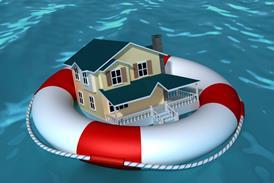The Environment Directive has been toned down, but issues remain.
After a decade of debate, an agreement has been reached on the Environmental Liability Directive.
The compromise, reached on 20 February, represents a balance between compulsory financial guarantee and a voluntary approach.
Having sought to avoid compulsion, the final Directive is a major success for the lobbying efforts of the ABI and its Europe-wide counterpart, the Comité Européen des Assurances (CEA).
But there are some compulsory issues which could create problems for insurers and policyholders.
Although there are existing environmental liability insurance (ELI) products, the Directive introduces new liabilities. Existing ELI products cover the clean up of soil and water, while the Directive will further extend cover to damage to natural resources, including protected species and natural habitats.
Insurers and policyholders would then face three major problems in implementing this part of the Directive:
As with any compulsory class of insurance, the obligation is on the operator to purchase the product and not on insurers to supply it. Without an adequate supply of products available, tens of thousands of businesses would suddenly find themselves in breach of the law, even if they could afford the premiums.
As a compromise measure, the CEA proposed that a Europe-wide research programme should be established, sponsored by the European Commission and incorporating a wide range of stakeholders, including environmental bodies, governments, industry and insurers. The ABI and CEA continue to promote adoption of the research programme.
The Directive requires member state to encourage the development of appropriate instruments to support the new obligations.
Six years after the Directive is adopted, the commission will review progress and consider whether or not a regime of compulsory financial guarantees should be introduced.
For member states, the next step is for the Directive to be incorporated into national law. It is still unclear what the UK will do to encourage development of appropriate products in sufficient quantity, but the government is to commence a consultation process in which the ABI and its members intend to play a full part.
Throughout the legislative process, insurers engaged closely and constructively with the EU through both the ABI and the CEA. Insurers supported the overall objective of the Directive and had always said that the proposed liabilities could be insured.
However, time was needed for the development of capacity and necessary expertise in underwriting, risk management and claims handling. If the research package is adopted as well, the final Directive addresses many of these concerns and provides insurers with an opportunity instead of a problem.





































